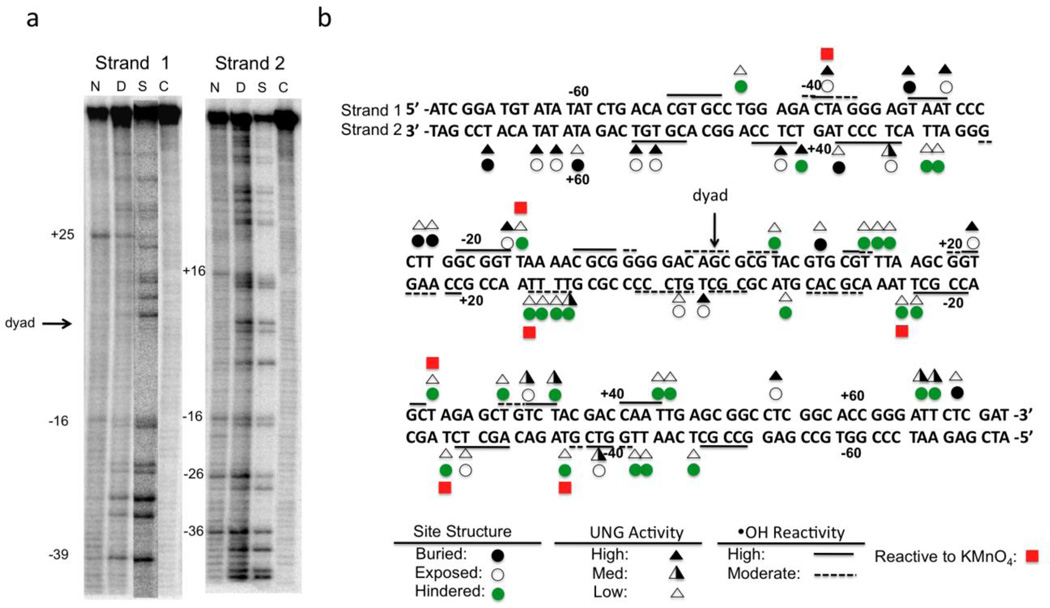Figure 3.
Comparison of UNG reactivity with structural properties of the uracil sites in the NCP. (a) KMnO4 footprinting of each strand of the 147mer DNA in the context of the NCP (see Methods). Abbreviations: N, NCP; D, free DNA; S, single strand T ladder; C, control (free DNA, no KMnO4). (b) Comparison of the reactivity of hUNG with site exposure in the crystal structure, and KMnO4 and hydroxyl radical footprinting data28. Key legend: Triangles represent the ratio (R) between the initial rates for uracil excision in the nucleosome site as compared to the same site in free DNA, with filled, half-filled and unfilled triangles corresponding to R > 0.2, 0.2 > R > 0.02, and R < 0.02, respectively. High and moderate sensitivities to hydroxyl radical are indicated by solid and dashed lines. Red squares indicate high sensitivity to KMnO4 oxidation. Open, black and green circles represent rotationally exposed, buried, and rotationally exposed (but otherwise sterically hindered to UNG) uracil sites, respectively.

